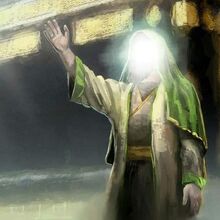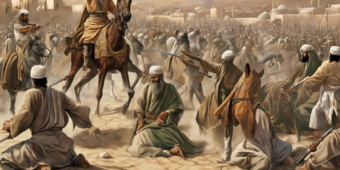Prophet Muhammad's Wars: Complete List and Detailed Descriptions
The military campaigns led by Prophet Muhammad, often referred to as the Muhammad war, mark a pivotal series of events in the early history of Islam, shaping not only the spiritual landscape but also the geopolitical contours of the Arabian Peninsula. These conflicts, ranging from skirmishes at Abwa and Uhud to the significant battles like Badr and the conquest of Mecca, were not only instrumental in defending the nascent Muslim community against external threats but also in establishing Islam's foothold in Arabia. Their outcomes had far-reaching implications for Mecca, Medina, and beyond, influencing the direction of Islamic expansion and the consolidation of Muslim territories.
This article delves into a comprehensive list and detailed descriptions of key military engagements associated with these transformative years, including the Battle of Uhud, which tested the resilience of Muslim fighters; the complex Siege of the Trench (Khandaq) that protected Medina from invasion; the controversial Battle of Banu Qurayza, highlighting issues of treachery and justice; and the strategic confrontations at Khaybar, Taif, and the expedition to Tabuk, which challenged the stability of Arabian tribes and foreign powers alike. By exploring these pivotal moments, the reader gains insights into the strategic, moral, and spiritual dimensions of the muhammad war and its enduring impact on the Islamic world and its history.
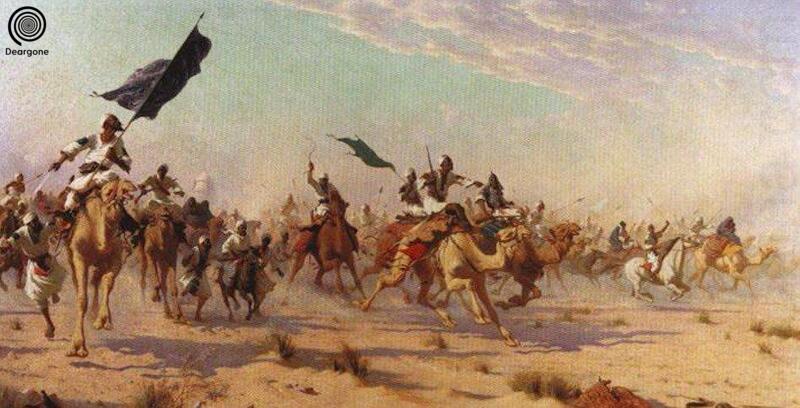
Battle of Uhud war In Islam
The Battle of Uhud began with the Muslim forces seizing the early advantage. The Quraysh vanguard, initially faltering under pressure, began to retreat, exposing their camps. This initial success for the Muslims was, however, short-lived. A critical error occurred when the Muslim rear guard, tasked with defending a strategic hill to prevent encirclement, abandoned their post to collect spoils from the fleeing enemy. This mistake was swiftly exploited by the Quraysh general, Khalid ibn al-Walid, who executed a daring cavalry strike on the now undefended rear of the Muslim forces, drastically changing the battle's momentum.
Main Conflict
As the battle intensified, the Muslim archers, positioned strategically to protect the flank, initially repelled repeated assaults by the Quraysh cavalry. The Muslims, buoyed by their early successes, penetrated the Meccan lines, and victory seemed imminent. However, the tide turned dramatically when a majority of these Muslim archers, contrary to the explicit orders of Prophet Muhammad, descended from their positions to join the advance and plunder the Meccan camp. This left the Muslim flank critically exposed. Seizing the opportunity, Khalid ibn al-Walid's forces overwhelmed the few remaining archers and executed a devastating flank attack, causing significant Muslim casualties, including the noted figure Hamza, struck down by the Ethiopian slave Wahshi ibn Harb.
Muslim Defeat and Retreat
The ensuing chaos and disarray led to a grim outcome for the Muslim forces. While many managed to regroup and retreat to higher ground on the slopes of Mount Uhud, a faction was cut off, attempting to return to Medina but suffering heavy losses in the process. The Quraysh cavalry, unable to pursue up the steep inclines of Uhud, eventually ceased their assault. Despite the initial advantages and superior strategic positioning, the Muslim forces faced a significant setback due to critical lapses in discipline and the premature abandonment of defensive posts
Battle of Banu Qurayza in Islam
Confrontation Build-up
The Banu Qurayza, a Jewish tribe in Medina, initially allied with the Muslims during the Battle of the Trench, providing tools for trench digging but refrained from direct combat due to grievances over Muhammad's previous actions against Jews. Post-battle, tensions escalated when Muhammad, reportedly under divine command, accused the Banu Qurayza of siding with his enemies, leading to a decision to lay siege to their stronghold
Key Engagements
The siege of Banu Qurayza lasted for 25 days. Despite their earlier assistance, the tribe faced severe accusations from Muhammad of betrayal during the critical moments of the Battle of the Trench. The besieged tribe ultimately surrendered, hoping for leniency from their former allies, the Banu Aws, a prominent Arab tribe within Medina
Outcome and Judgment
Following the surrender, the fate of Banu Qurayza was left to Sa'd ibn Muadh, a leader from the Banu Aws, chosen by the Muslims and dying from battle wounds. His judgment, believed to be divinely inspired, was harsh: all pubescent males were executed and the women and children enslaved. Historical records estimate the deaths to be between 600 to 900 males. This judgment was endorsed by Muhammad as being the decree of God, reflecting the severe consequences of perceived treachery during wartime
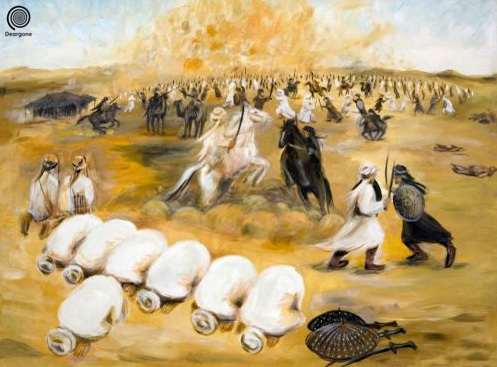
Battle of Khandaq In Islam
Siege Tactics
The Battle of Khandaq, also known as the Battle of the Trench, showcased a critical strategic innovation in Arabian warfare. The Muslim forces, under the leadership of Prophet Muhammad, faced a formidable coalition of 10,000 troops from the Quraysh and various other tribes, significantly outnumbering the 3,000 defenders of Medina. In response, the Muslims implemented a defensive strategy inspired by Salman the Persian, involving the digging of a deep trench along the vulnerable northern approaches to the city. This trench effectively neutralized the enemy cavalry, preventing them from breaching the city's defenses and causing a stalemate
Defensive Strategies
As the siege dragged on, the defenders of Medina maintained their positions behind the trench, which served as a formidable barrier against the confederate forces. The trench, filled with the excavated earth, formed an embankment that the Muslim defenders used to their advantage, launching arrows and stones at any attempted crossings. The strategic placement of the trench, combined with the natural fortifications of Medina, created a defensive stronghold that the confederates found impregnable. Repeated attempts by the confederate forces to cross the trench at night met with failure, as the defenders were well-prepared to repel these incursions
Conclusion of Siege
The prolonged siege tested the resolve of both the attackers and defenders. However, the turning point came with a divinely inspired natural phenomenon. A severe windstorm struck the besieging confederate camp, causing disarray and forcing them to retreat. This event, perceived as divine intervention, demoralized the confederate forces and led to the dissolution of their alliance. The strategic foresight in constructing the trench and the unity among the Muslim defenders were pivotal in turning what seemed an overwhelming invasion into a decisive victory for the Muslims of Medina
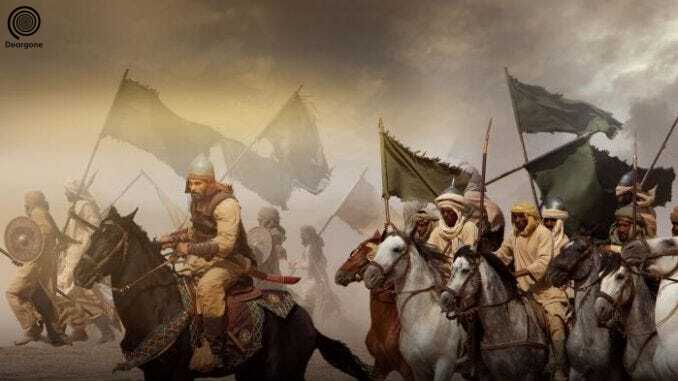
Battle of Tabuk In Islam
Reasons for Campaign
The Battle of Tabuk, also known as the Expedition of Usra, was primarily provoked by the Byzantine Empire's preparation for an invasion aimed at eradicating the rising Islamic influence. In response to the threat and the killing of one of his ambassadors by a Byzantine official, Prophet Muhammad mobilized a large force. This campaign was not only a defensive maneuver but also a demonstration of the burgeoning Muslim power against the Byzantine Empire's intentions
March and Engagements
In October 630 CE, Prophet Muhammad led approximately 30,000 men northwards to Tabuk. The journey was marked by severe hardships, including extreme heat and scarcity of water. Despite these challenges, the Muslim army's advance was a display of strategic acumen and unity. The troops were rallied with the help of substantial contributions from wealthy Muslims and even sacrifices from poorer community members who offered whatever little they could. Upon reaching Tabuk, the expected confrontation with the Byzantine forces did not occur as the enemy had withdrawn, leaving the Muslim forces to negotiate treaties with local tribes and smaller communities
Outcome and Significance
The absence of direct combat did not diminish the significance of the expedition. The strategic show of force and the subsequent treaties extended the influence of the Islamic state into previously contested regions. The successful campaign without battle further solidified the military reputation of the Muslims and demonstrated the effectiveness of collective effort and divine support in overcoming adversities. The expedition also exposed the hypocrites within the Muslim community, whose reluctance and criticisms were addressed by Prophet Muhammad, reinforcing the values of sincerity and commitment.
Conclusion
Throughout the annals of early Islamic history, the military campaigns led by Prophet Muhammad stand as transformative battles that not only shaped the spiritual essence of the then nascent Muslim community but also redefined the geographical and political landscapes of the Arabian Peninsula. From the pivotal Battle of Badr to the strategic conquests of Mecca and encounters like Uhud, Khandaq, Banu Qurayza, Khaybar, and the expedition to Tabuk, these engagements underscored the resilience, strategic acumen, and spiritual dedication of the Muslim forces. These historic confrontations were instrumental in establishing Islam's dominion, demonstrating the intricate fusion of faith, strategy, and unity against adversaries.
The significance of these martial episodes transcends mere historical recounting, serving as a testament to the enduring impact of these early Islamic conflicts on the subsequent expansion and consolidation of Muslim territories. Through a blend of strategic ingenuity and profound spiritual conviction, Prophet Muhammad and his followers laid the groundwork for an Islamic state characterized by its robust faith, strategic depth, and an unparalleled commitment to its cause. As the echoes of these battles continue to resonate, they invite reflection on the lessons of unity, faith, and perseverance, echoing the profound implications these events hold for understanding the Islamic world's historical and theological foundations.
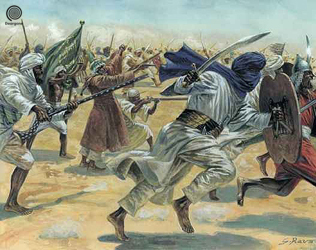
What battles did Prophet Muhammad participate in?
Prophet Muhammad was involved in several battles during his lifetime, although specific battle names are not detailed in the provided text.
Can you provide a detailed history of Prophet Muhammad?
Muhammad was born around the year 570 in Mecca, Arabia (now Saudi Arabia) and died on June 8, 632, in Medina. He founded Islam and was the proclaimer of the Qur'an. His migration to Medina in 622 with his followers marked a significant event in Islamic history.
What were Prophet Muhammad's orders during warfare?
Prophet Muhammad commanded his followers to fight in the name of Allah and in the way of Allah. His instructions included fighting against those who disbelieve in Allah, engaging in holy war, not embezzling spoils, keeping pledges, not mutilating dead bodies, and not killing children.
Was there any battle that Prophet Muhammad did not take part in?
Prophet Muhammad did not participate in the Battle of Badr. This battle occurred unexpectedly when the Muslims, intending to intercept a Quraysh caravan, met their enemy instead. Those who did not participate in this battle were not blamed, as the encounter was unforeseen.
you can see this article: How many children did Muhammad the prophet of Islam have?
And this article: Wives of Muhammad prophet of Islam
And this article: Who is the prophet of Islam

